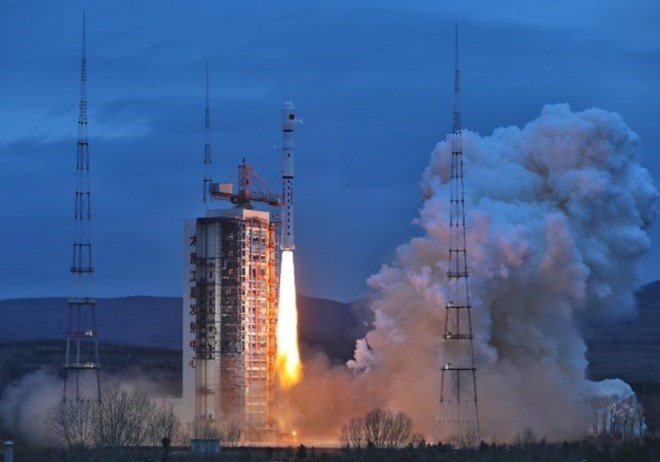Space in Africa
Friday December 20, 2019

A Chinese Long March 4B rocket (CZ-4B) today blasted off into space carrying onboard Ethiopia’s first remote sensing satellite, ETRSS-1, at 03:21 GMT from the Taiyuan Satellite Launch Center in China.
The flight which was earlier scheduled for 17 December was scrubbed for three days due to unfavourable weather. The 3-stage orbital carrier rocket ferried Ethiopia’s ETRSS-1 satellite as a secondary payload and the CBERS 4A remote sensing satellite as a primary payload. CBERS 4A is the fifth China-Brazil Earth Resources Satellite for the collection of global imagery for environmental, urban planning and agricultural applications.
The 70kg multi-spectral civil Earth observation satellite will provide data for Ethiopian authorities and research institutions to monitor the environment and study weather patterns for better agricultural planning, early warning for drought, mining activities and forestry management.
The satellite was developed by the China Academy of Space Technology (CAST), the prime contractor, in collaboration with 21 Ethiopian scientists, trained on the project as part of the technology-transfer agreement between Beijing and the Ethiopian Space Science Technology Institute (ESSTI).
The satellite project was developed in collaboration with the Chinese government and reportedly cost USD 8 million for the design, construction and in-orbit delivery of the satellite including the cost of setting up the ground station in Ethiopia. China provided USD 6 million in funding for the satellite and trained Ethiopian engineers while the Ethiopian government provided USD 2 million counterpart funding for the ground station facilities which are located at the Entoto Space Observatory near Addis Ababa.
Earlier this year, the Ethiopian Prime Minister Abiy Ahmed visited the China Academy of Space Technology to inspect the satellite, during his stay in China when he attended the second Belt and Road Forum for International Cooperation that was held from 25 to 27 April in Beijing.
The launch of ETRSS-1 marks a noteworthy development in Ethiopia’s space ambitions, which gained formal government involvement in recent years. The launch is considered a landmark in 2012 (according to Ethiopia’s calendar year) and has inspired the Space Generation Campaign among the nation’s burgeoning community of young space scientists led by the Ethiopian Space Science Society (ESSS) – Ethiopia’s foremost space advocacy and outreach organization comprising of more than 10,000 members, 20 branches and 100 school space clubs spread throughout the country.
The East African nation has signed an agreement with China for the construction of a communication satellite for commercial telecommunications and broadcasting services. The details of the contract and the satellite development timeline have not been disclosed.
The Ethiopian government is also investing in indigenous capacity in developing satellites and other space technologies. The government recently signed an agreement with French space company, ArianeGroup, to commence the construction of satellite manufacturing, assembly, integration and testing (MAIT) facilities in Addis Ababa in January 2020 with a completion timeline of 30 months.
ETRSS-1 is Africa’s 41st satellite in space and the third East African satellite, after Kenya’s 1KUNS-PF was launched in 2018 and Rwanda’s RwaSat-1 in September 2019. Ethiopia is now the 11th African nation to have launched a satellite into space, joining the ranks of Algeria, Angola, Egypt, Ghana, Kenya, Morocco, Nigeria, Rwanda, South Africa and Sudan.